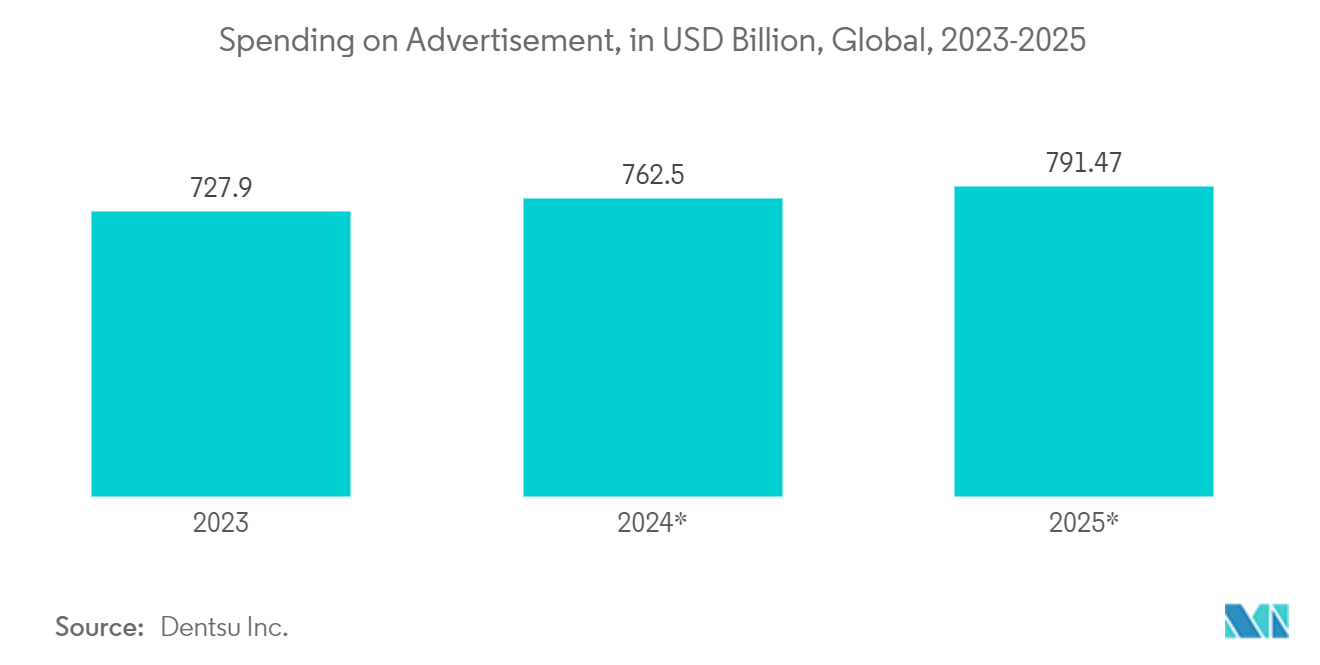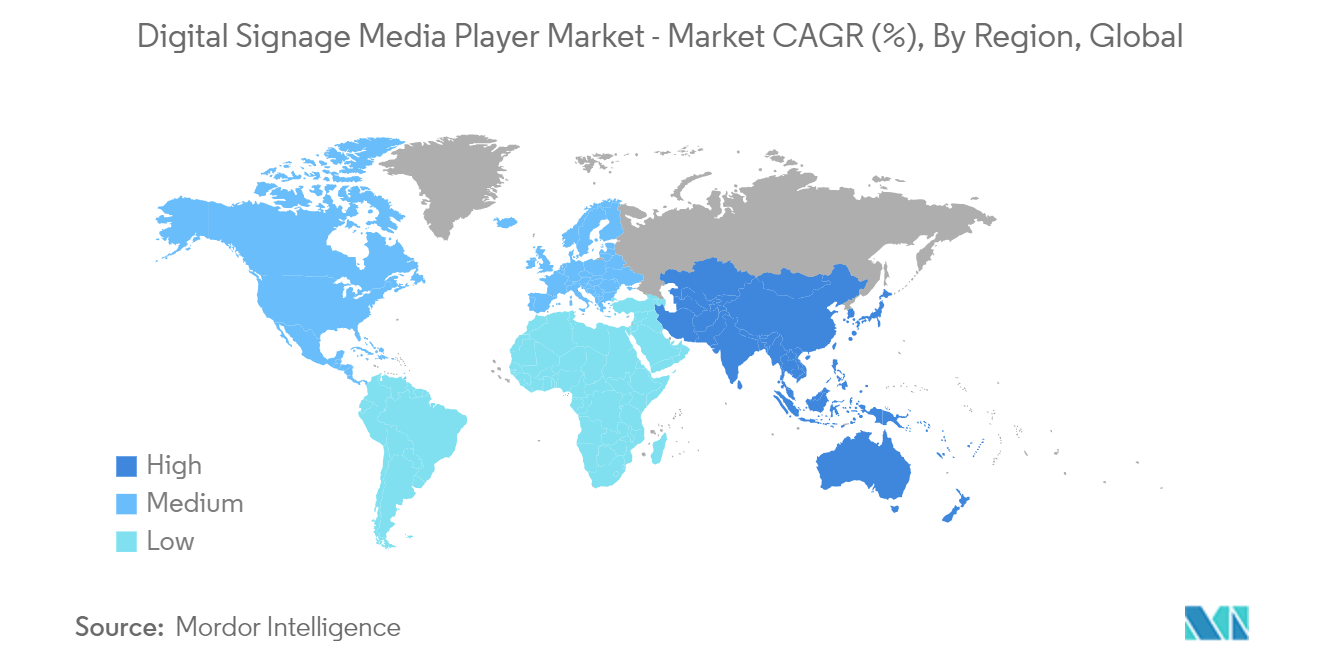Market Trends of Digital Signage Media Player Industry
The Retail Segment is Expected to Hold a Significant Share
- Retail sales require personalization, which has been the cornerstone of the success of behavior-based ads. While contextual ads have traditionally focused on content relevance, they need more direct customer communication. However, the landscape is poised for a significant shift with the integration of artificial intelligence (AI), promising to infuse personalization into contextual advertising, which propels the market toward growth.
- The retail sector's adoption of digital signage media players is on the rise, aimed at bolstering consumer engagement and drawing in fresh clientele. Retailers are pivoting towards advanced tech solutions to elevate their in-store experiences and widen their customer base. Moreover, the surge in these devices, boasting enhanced interactive features like touch screens, is fueling a heightened demand within the industry.
- The majority of traditional advertising is printed signage, which has been replaced with digital signage, aiming at customer attraction and satisfaction through cost-effectiveness in the long run. Printed signages were single-use messages such as billboards and posters, frequently discarded due to the dynamic nature of content marketing today.
- The retail sector is a widely adopted segment with the highest investment in digital signage for advertising. One major challenge is coordinating marketing campaigns while accommodating the individual needs of various locations. Adopting a robust digital signage system is making engaging retail stakeholders much easier.
- Among the different advertising channels, such as radio, television, and print, digital remains a key driver of global advertising market growth and is on an upward trajectory. Such increased digital advertising spending, along with allocated budgets by the companies toward digitization, is the major reason for the high adoption rate of these devices in the commercial segment. In particular, digital signage, coupled with Bluetooth or BLE, offers an effective combination for contextual marketing. Beacon-enabled mobile apps collect customer data and use it to send personalized messages. For the same reason, media player providers must embed the required connectivity.
- According to the latest Dentsu Global Ad Spend Forecasts report, global advertising investment was expected to increase by 3.3% in 2023. The report predicted that by the year's end, approximately USD 727.9 billion will have been spent worldwide, marking a significant growth in the industry's expenditure. Digital ad spending for digital signage is expected to increase along with global brands' affinity toward digital ad spending (internet), opening paths to incorporate digital spending along with OOH (out-of-home) ads. As per forecasts, the incremental increase in the Y-o-Y advertisement spending was recorded for out-of-home (+3.8%), cinema (+2.1%), and audio (+0.8%). The current trends are contributing to a optimistic market outlook.

North America Holds Major Market Share
- The United States is one of the largest digital signage marketplaces. Due to recent technological advancements in display, connectivity, and monitoring spaces in numerous applications, including retail stores, transportation systems, outdoor advertising, restaurants, museums, corporate buildings, and public spaces, digital signage is becoming increasingly popular in the United States. In addition, the widespread usage has led to a sharp decline in the cost of display panels.
- The retail sector in the United States is predicted to gain a considerable market share to provide a distinct in-store user experience. The OBERLO estimates that US retail sales were planned to expand by 0.6% in 2023 and 1.3% in 2024, accounting for USD 1.9 trillion in the third quarter of 2022. Businesses combine online and offline shopping to make a seamless multi-channel experience. This has changed a lot of things, like prices, features, and ways to promote.
- According to Scala Digital Signage, 42% of purchases are anticipated to come from online, mobile, and social commerce websites. In comparison, 74% of US retailers believe creating an engaging in-store consumer experience is crucial. As a result, new and established firms heavily invest in their R&D capabilities, release new products or develop old ones, and form partnerships to gain the largest possible market share.
- Canada is renowned for punching above its weight in the economic and industrial realms despite having a population of only 39 million and one of the largest economies in the world. This is also true for digital signage, where a mature infrastructure and a populace that prefers in-person to online shopping present network operators with enormous opportunities.
- The pandemic permanently altered Canadian retail, yet the growth of e-commerce has been robust and long-lasting. Unsurprisingly, online information, inspiration, and purchasing are all facilitated by digital, which is now the doorway to all commerce and is driving the Canadian shopping experience online and offline. Because of this, the Canadian retail market for digital signage is likely to grow since businesses need a solid digital presence to meet customer needs.


